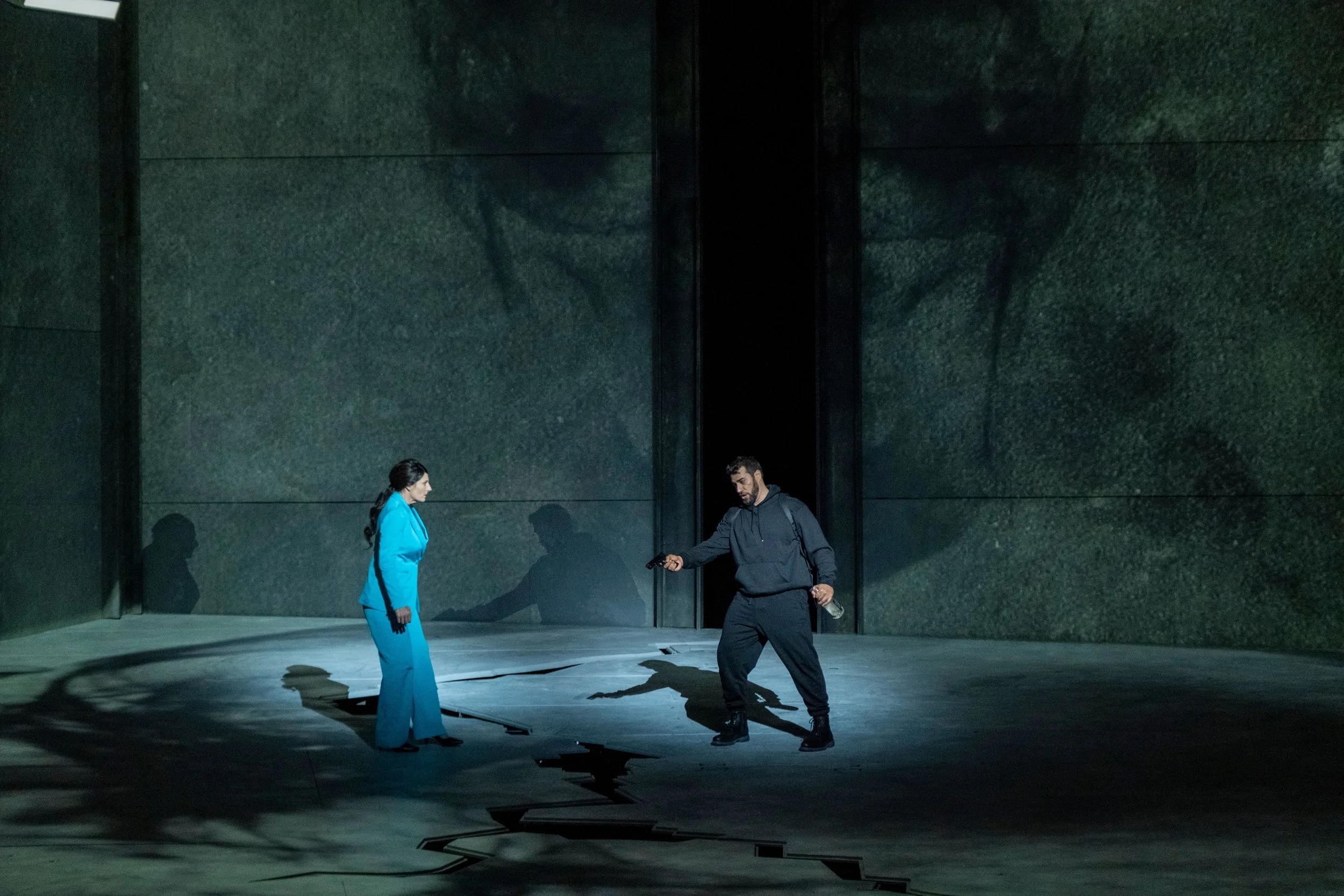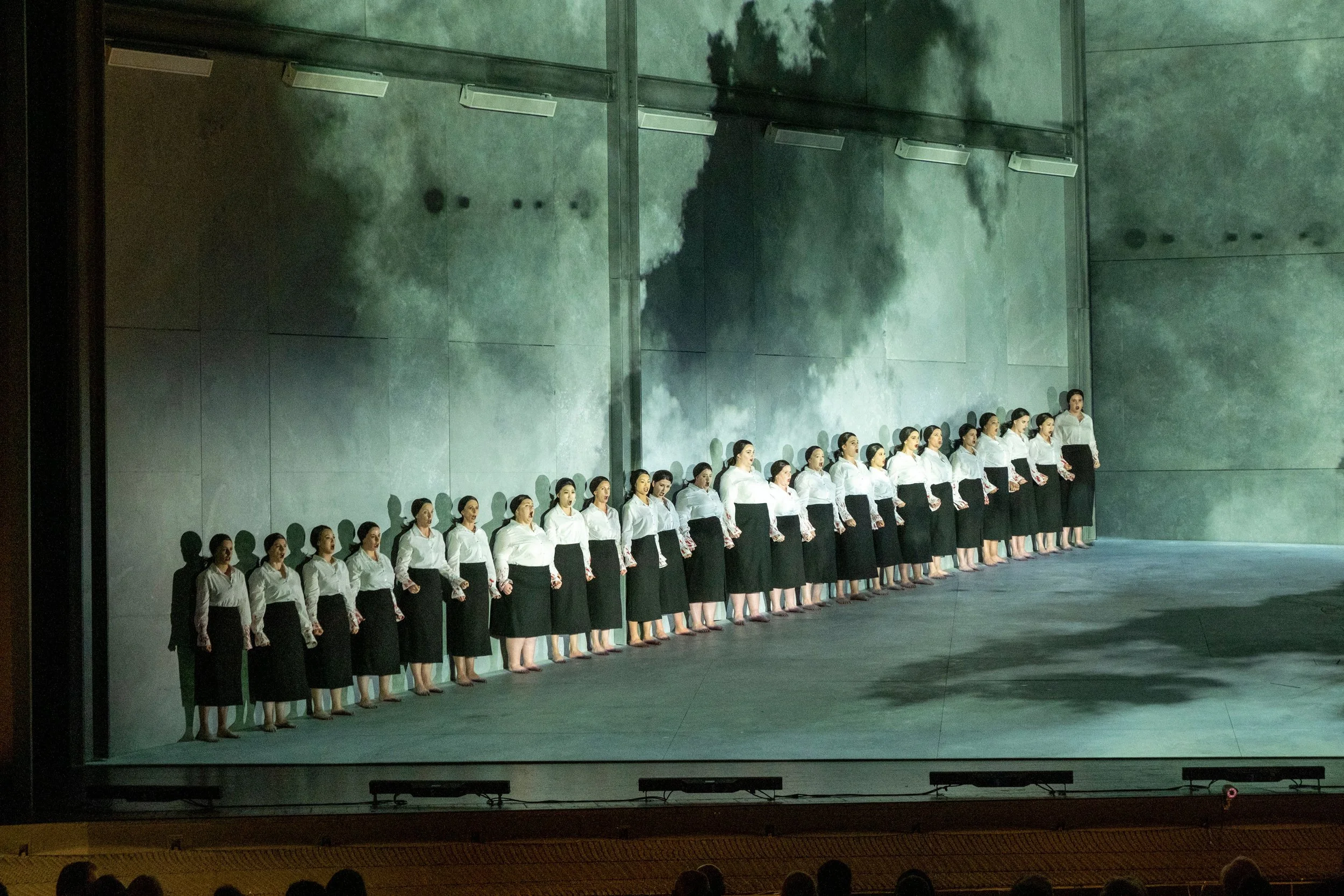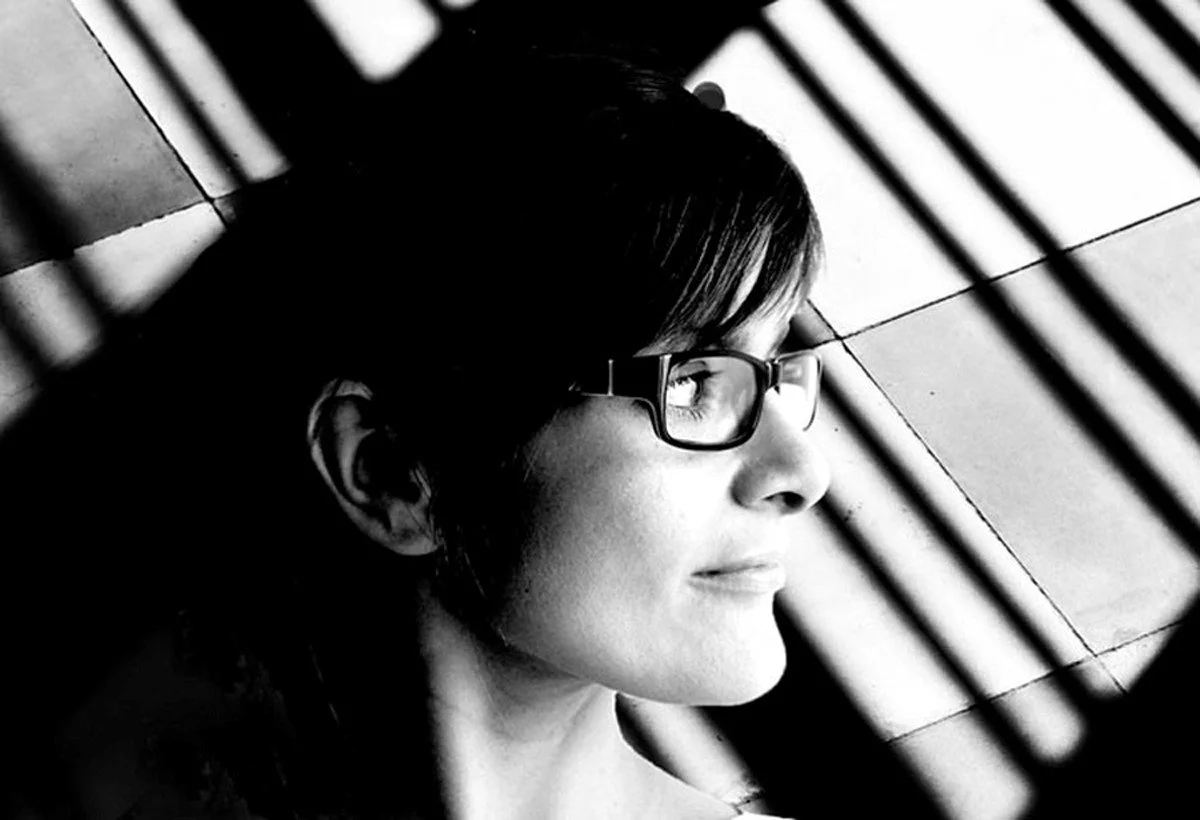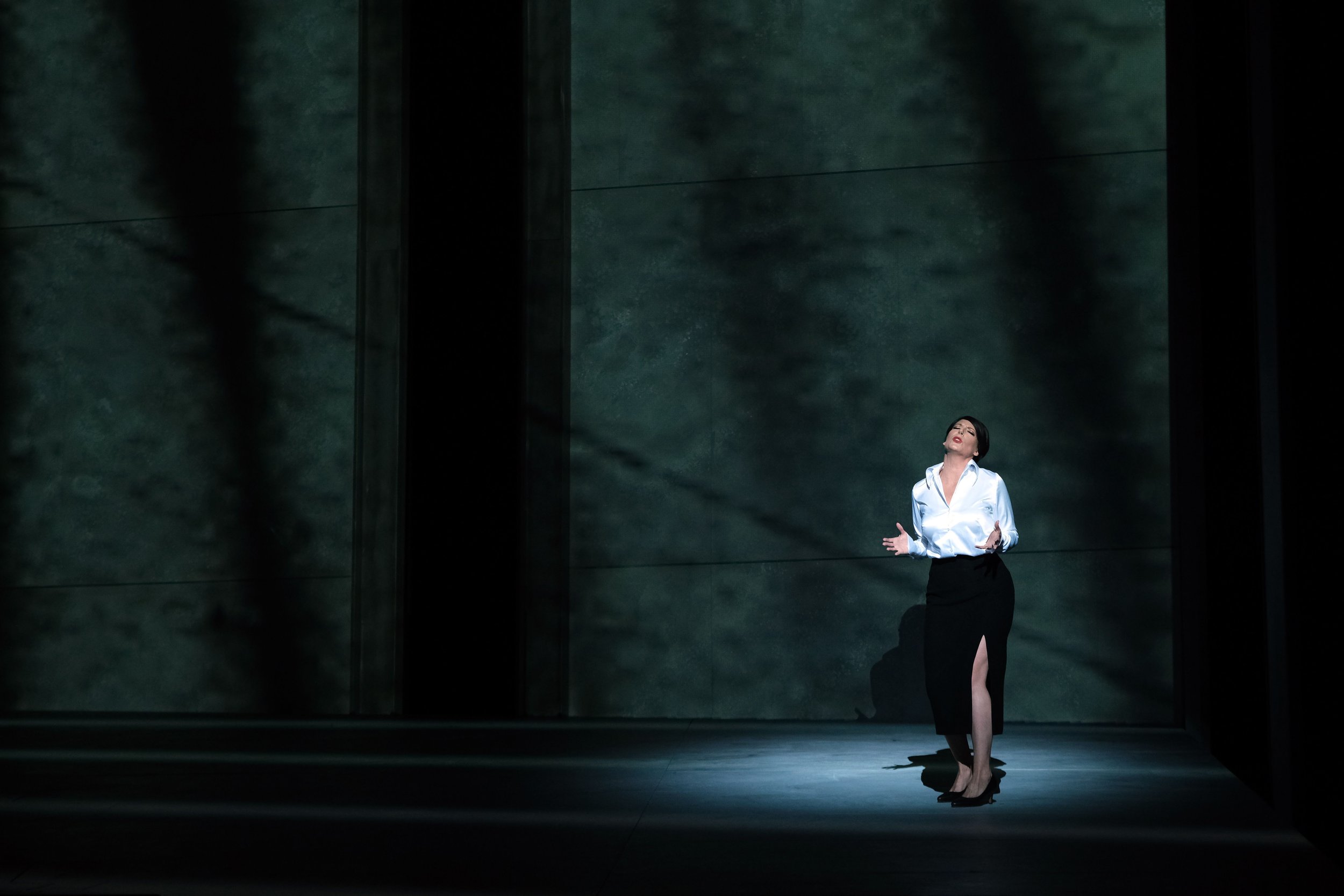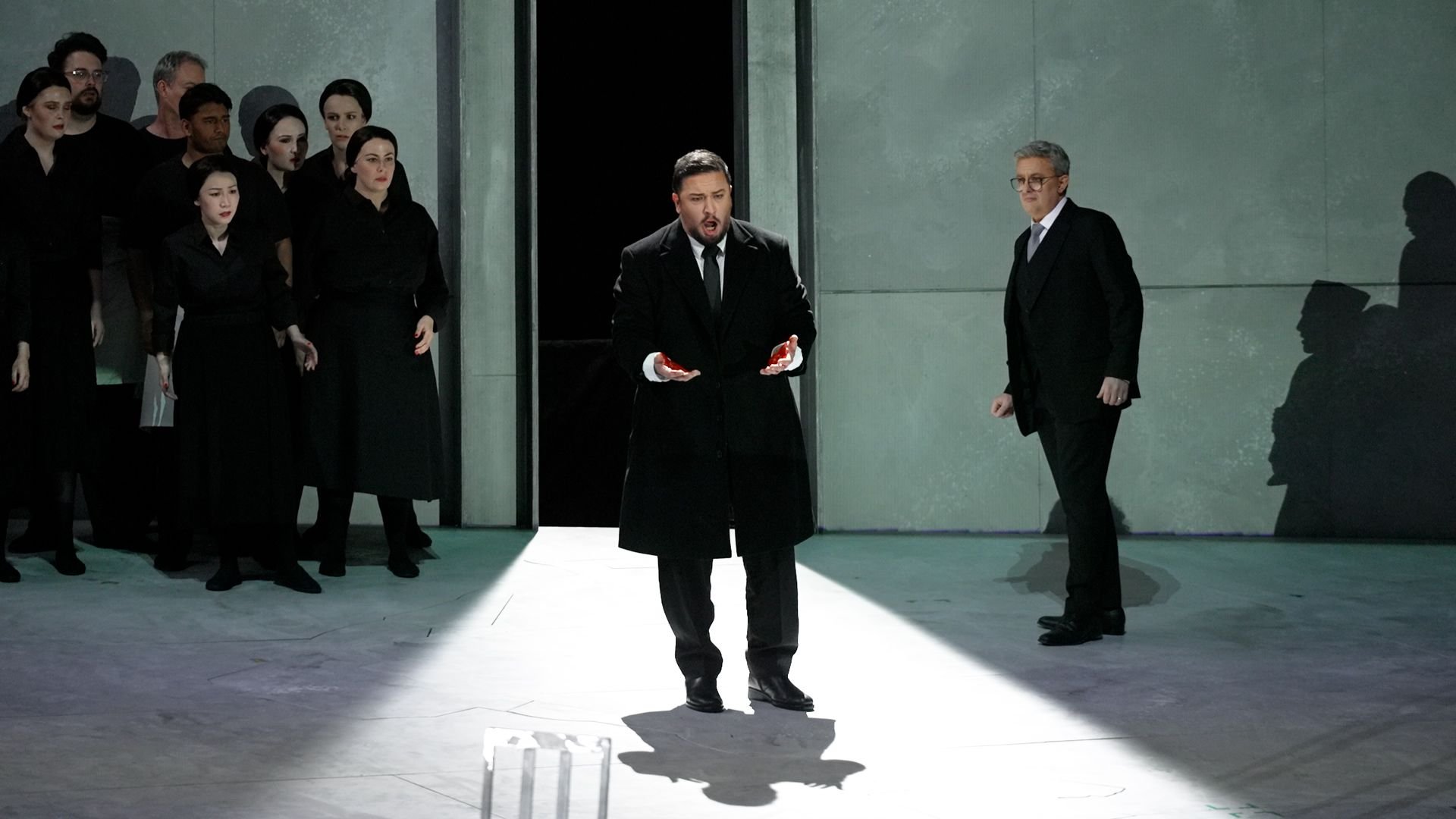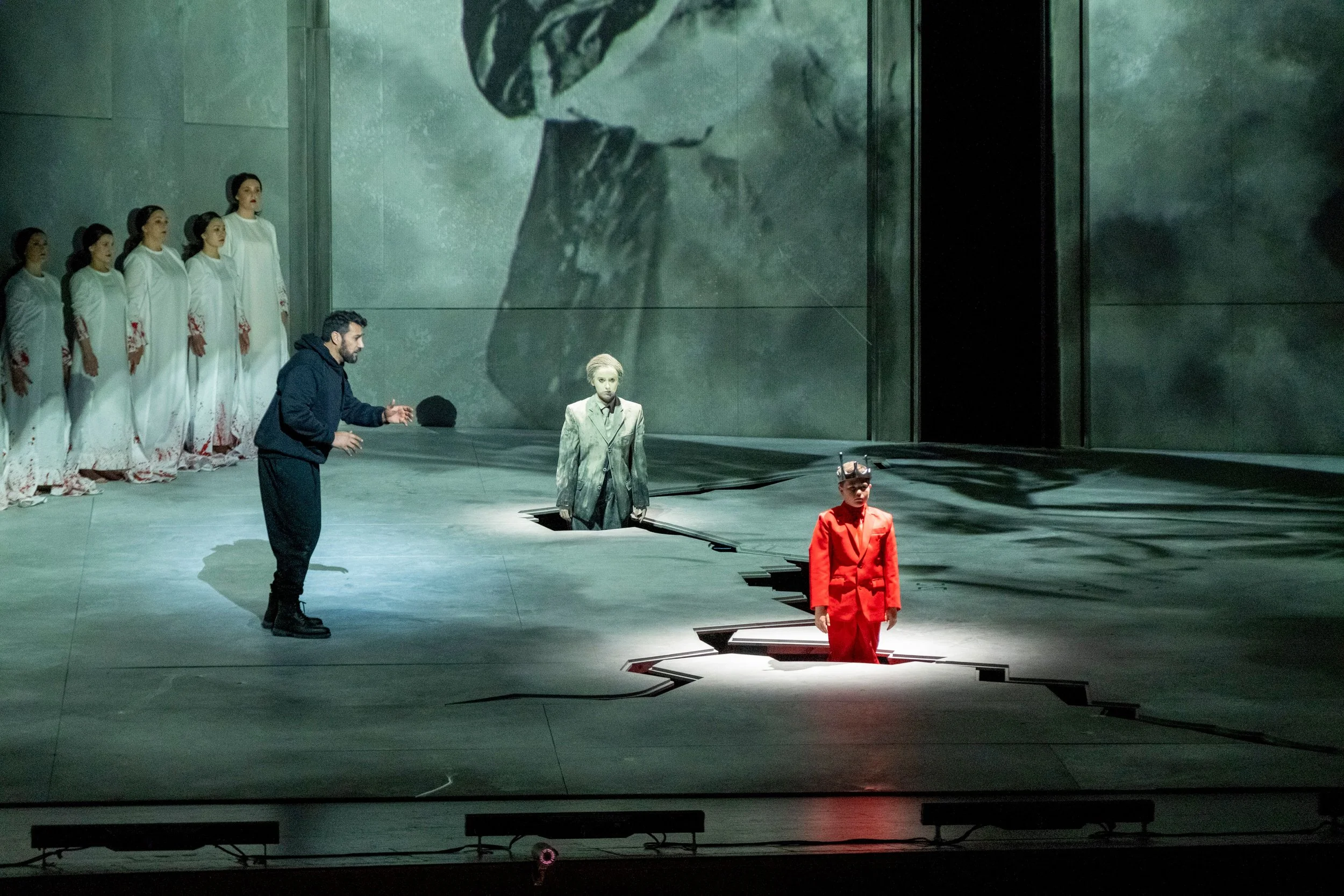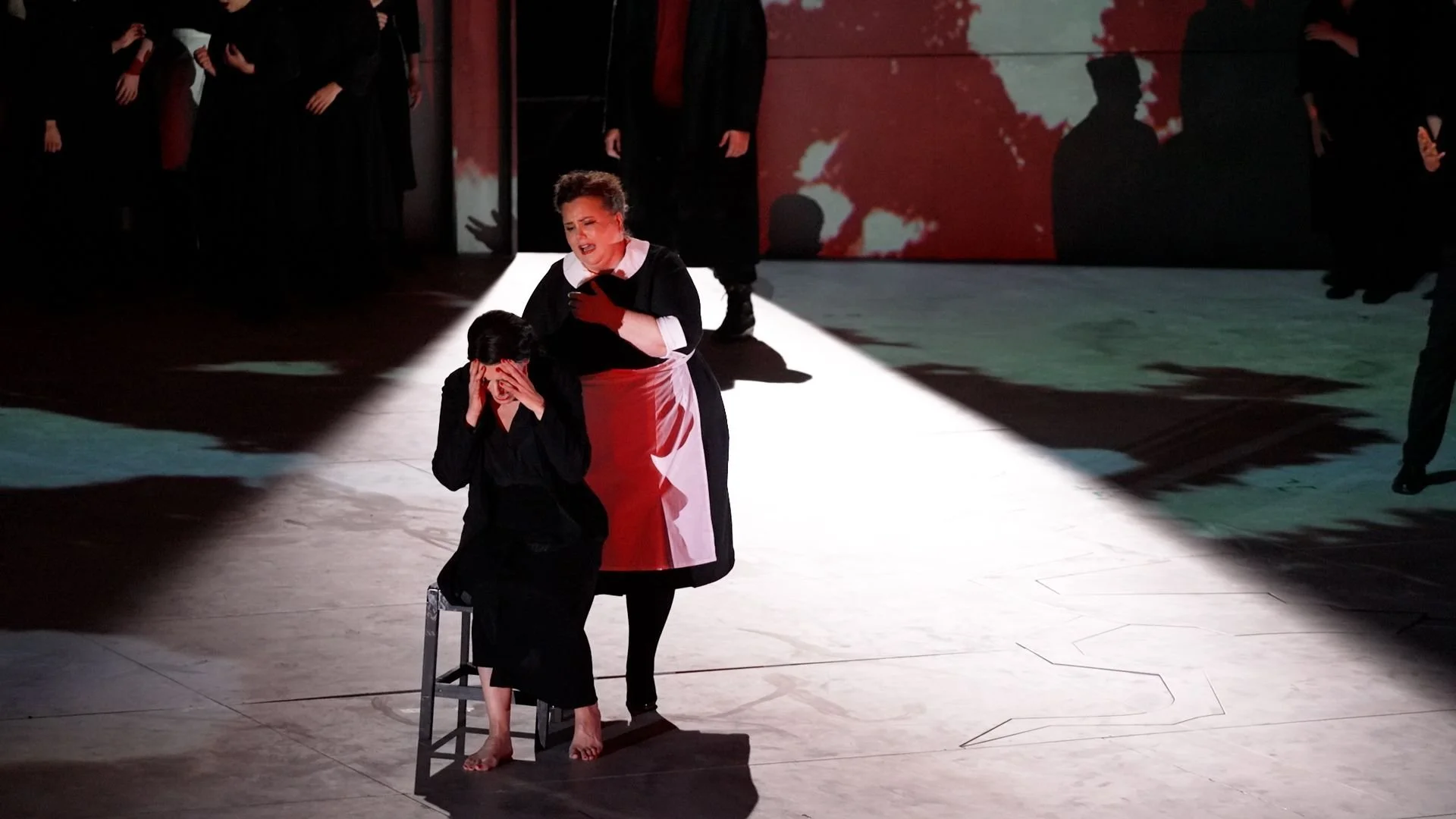New Zealand Opera’s Macbeth: opening the gates of hell
Amanda Echalaz as Lady Macbeth and Phillip Rhodes as Macbeth
Photo credit: Grant Triplow
The curtain was open, but a starkly angular, monochrome set gave little away as the Wellington audience took its seats for the opening night of New Zealand Opera’s new production of Verdi’s Macbeth in the refurbished St James Theatre. The first “standard” repertoire production by the company this year was eagerly anticipated.
Woodwinds open the overture with a creepy little melody, scurrying strings above and fearsome interruptions from snarling low brass. Under the baton of Music Director Brad Cohen, the musical scene is set by Orchestra Wellington in the pit and it’s immediately clear that this operatic masterpiece, based on Shakespeare’s tragedy, is not going to be a comfortable ride. A dramatic blood splatter projected across the set suggests the gates of hell are not far distant.
Enter the witches - and put away any stereotypes of ancient hook-nosed crones. The 21 singers of the female chorus cross the raked stage as solemn pony-tailed schoolgirls in white blouses and long skirts, the famous witches’ chorus sung with their backs to the drab grey walls. But what of those grotesque, jagged black tears on their cheeks?
Macbeth - the female chorus in Act 1
Photo credit: Grant Triplow
In a recent interview with Five Lines, the Director and Designer of the production, Netia Jones, explained that the deliberately restricted colour palette allows the set to operate like a vessel for complex interactions between the characters. The humans, she said, “feel rather small in this unfriendly, cold world; it’s not a place of comfort or a place of safety.”
Director and Designer Netia Jones
…the restricted colour palette means her set operates as vessel for complex interactions.
The set and Jones’ clever projections provide a mostly sombre and ominous atmosphere, while the profound passions of the story are expressed by the singing cast and through Verdi’s orchestral music. The first soloists on stage, baritone Phillip Rhodes as Macbeth and bass Wade Kernot as Banquo, bring magnificent vocal timbres. These two are superb operatic singers, their acting compelling and their voices full of emotion. Kernot’s bass is thrillingly rich, while Rhodes reveals his haunted and uncertain character through singing of wonderfully varied colours.
Jones’ approach to costume is highly symbolic throughout. Macbeth is in black, but a glimpse of scarlet lining as he advances down the stage hints at bloodstains to come. When Lady Macbeth arrives in scene two, she wears the same schoolgirl garb as the witches, though her white blouse is more gleaming and glamorous. We recognise her as the arch-witch, the true evil force of the story.
Soprano Amanda Echalaz as Lady Macbeth
…”big stage personality and powerful vocal range.”
Photo credit: Grant Triplow
South African soprano Amanda Echalaz plays the role. Her strong dramatic voice and compelling stage presence capture the audience at once in the popular aria Vieni! t'affretta!/ "Come! Hurry!" Macbeth is about power and ambition and Echalaz as Lady Macbeth embodies both, with her big stage personality and powerful, wide vocal range from characterful chest voice to glowing high soprano. Macbeth is clearly unnerved by his wife’s passionate lust for power. Rhodes portrays an ambitious but conflicted character, complex, ambiguous, and ultimately weaker than his witch of a wife.
Of course, Macbeth as play and opera is brim-full of murder; in this production it mostly occurs offstage, adding to the mystery and drama, with bloodstains and daggers bringing the horrors onstage. It’s also full of splendid big ensemble moments - this is Verdi, after all - and after the first murder by the Macbeths, Banquo returns to the stage with tenor Jared Holt as Macduff to discover the crime and Act 1 closes with a marvellous full-voiced all-in rousing chorus.
Bass Wade Kernot as Banquo
…a thrillingly rich voice
Photo credit: Grant Triplow
Act 2 opens with dark and atmospheric projections of trees and clouds on to a gauze curtain at the front of the stage. Backstage, Banquo is assassinated, and the action moves seamlessly to the most dramatic scene change so far, a colourful celebratory banquet. Lady Macbeth in scarlet is all glitter and cleavage and flirtation, but she’s clearly drunk, drinking red wine (what else?) from the bottle. Macbeth, a little separate from the gathering, is a dour presence, troubled by frightening visions of Banquo’s ghost confronting and accusing him. It’s a very effective and climactic horror scene, Banquo's bloodied phantom advancing down the banquet table, Macbeth losing his mind, his wife trying to hold it all together and the chorus, now servants and guests, frozen with terror.
The dramatic creepiness continues in Act 3, the floor of the stage cracking open to reveal an emerging procession of future kings, silent red-clad children with crowns, each a little taller than the last, finally followed by Banquo’s frightening ghost. The women’s chorus is now wraithlike in white, a little blood-stained and weird, while a drunken Macbeth is visibly unravelling.
Baritone Phillip Rhodes as Macbeth
…visibly unravelling with singing of marvellous timbral variety.
Photo credit: Grant Triplow
The singing in this production is uniformly fine, although in Acts 1 and 3 the position of some of the women’s chorus well back on the stage reduces their ability to project fully. The orchestral accompaniment under Cohen is consistently sensitive and flexible, particularly in Act 3 for Rhodes as he expresses Macbeth’s unhinged state with great singing and acting. Lady Macbeth in glamorous cyan pantsuit arrives at the end of the scene and attempts to bolster her husband’s courage.
Verdi didn’t want a heroic tenor for his Macbeth, choosing the darker baritone character. But just when we might have been missing ringing tenor voices, two of them feature in Act 4. In magnificent form, Jared Holt sings of Macduff’s dead children in the aria Ah, la paterna mano/”Alas, a father’s hand”, the orchestra underlining his emotions beautifully and the audience responding with warm applause. Younger tenor Emmanuel Fonoti-Fuimaono then brought his passionate, strong voice to join Holt and the male chorus in a moving scene full of righteous rage.
In this final Act soprano Morag Atchison, as elsewhere, is a great presence as Lady in Waiting, her fine singing and warm compassionate demeanour offsetting the increasing lunacy around her.
Morag Atchison as the Lady in Waiting comforts Lady Macbeth
…fine singing and a warm and compassionate demeanour.
Photo credit: Grant Triplow
Meanwhile, back at the castle, Lady Macbeth, in spectral white, examines her hands by torchlight in the famous “out, damned spot” aria. This mad scene reveals further Verdi’s musical and operatic genius, his ability to bring out character and plot with impeccable timing and gesture. That mastery carries us to the denouement of the opera, the tragic and demented Macbeth’s last great aria, his murder by Macduff and a final rousing chorus of victory.
This production of Macbeth is not set in any country or period and the themes are those played out in our global media daily - unbridled ambition, battles over territory and the inheritance of power. There are guns, knives, ultra-violence, alcohol, madness and, through it all, the lust for dominance. It’s a very thoughtful and clever demonstration of how relevant and revealing opera can be and New Zealand Opera must be congratulated for this high-quality musical production, outstanding creative direction and design team and stunningly adventurous approach. Christchurch, you’re next – don’t miss this.
New Zealand Opera Macbeth by Giuseppe Verdi Brad Cohen (Music Director), Netia Jones (Director and Designer), Phillip Rhodes (Macbeth), Amanda Echalaz (Lady Macbeth), Wade Kernot (Banquo), Jared Holt (Macduff), Emmanuel Fonoti-Fuimano (Malcolm),Morag Atchison (Lady in Waiting), with Orchestra Wellington and the New Zealand Opera Chorus (Michael Vinten, Chorus Director).
Auckland 21 - 25 September, Wellington 5 - 9 October, Christchurch 20 - 22 October (more information and tickets here)

